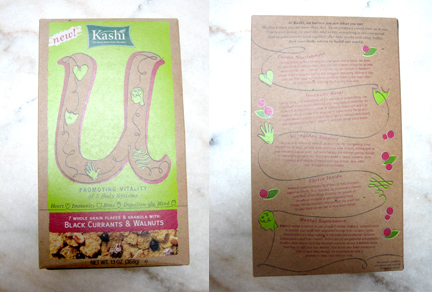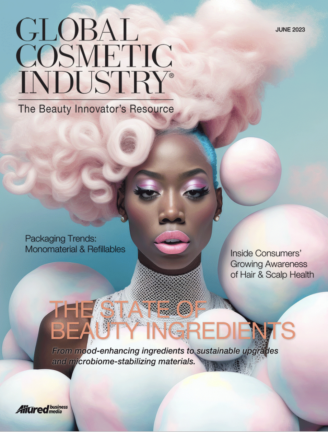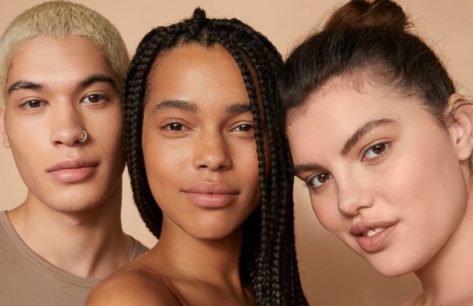
3 Keys to Increasing Conversions With First-Time Beauty Buyers

1 of a 4-part series: How the right combination of trust, intrigue and education can be leveraged to increase conversion rates with first-time buyers.
Converting a sale with a buyer for the first time can be a challenging task. It requires a deep understanding of the consumer mindset and the ability to effectively communicate a brand’s value proposition. In today’s market, customers have more options than ever before, and their attention is harder to capture.
I believe it is crucial to establish trust, intrigue and education, or TIE, with potential customers, which will motivate them to purchase from an unfamiliar brand. In this article, I will explore these three key areas of communication. And I will explain how the right combination of TIE incentives can be leveraged to increase conversion rates with first-time buyers.
1. Trust
The first of the TIE incentives, Trust, is a critical component of successful storytelling and marketing. Trust is a binary factor—either a person trusts a brand or they don’t. Without trust, no other marketing efforts will matter, as the customer simply won’t make a purchase.
Trust can be built through a variety of tactics. A brand could showcase endorsements from doctors, celebrities and influencers, or utilize user reviews from real people who are part of the brand’s target audience. Additionally, trust can be established through what is in a product and what is not, highlighting proven patented ingredients or statistics from clinical trials. Brands like Olaplex have effectively established trust by featuring clear and compelling clinical results that prove its products work.
Finally, trust can be confirmed through seals and certifications from third parties, such as those for vegan and cruelty-free products. This explains the recent boom in brands using thirdparty seals and certifications to confirm their trustworthiness to consumers. Building trust with consumers creates long-lasting relationships and fuels business growth.
2. Intrigue
Intrigue is the second of the TIE incentives, serving as the je ne sais quoithat draws audiences in and sets a brand apart from the competition. It encompasses the brand’s vibe and speaks to its tribe.
One brand that does an excellent job of leveraging intrigue is Pattern, the hair care brand founded by Tracee Ellis Ross. Pattern’s packaging is a blend of bold color and an illustration of textured hair that is both beautiful and meaningful. Attractive packaging, limited edition sets and innovative delivery methods all contribute to the intrigue that sparks the prospect’s interest.
Luxury beauty brands must have intrigue to build brand value and worth without using words to tout their luxury. Intrigue also involves interactive and engaging tools such as product finders, quizzes and virtual try-ons that help customers visualize themselves using the product. And let’s not forget beautiful imagery and cause marketing that aligns with customer values—these are all key components that create intrigue and can make a brand stand out from the crowd.
3. Education
Education is an essential aspect of the beauty industry, and it is the third TIE incentive. Today’s beauty consumers are more knowledgeable than ever before and yet still yearn to know more about the products they use. They crave information on product ingredients, concentrations, usage, tips and tricks. When consumers love a product, they will be guided to expand usage into other SKUs if you have clear brand architecture and product regimens.
Brands that provide education and product guidance create a sense of loyalty and trust. By showcasing how to use your products and what to use next, you can build a strong relationship with your customers.
People also believe in people, so sharing your founder’s story and the people behind your brand can help build your tribe. Paula’s Choice is a great example of a brand that provides transparency on ingredients and quality. The brand also offers extensive product education, establishing a reputation as a trusted authority in the beauty industry.
Finding the Right Combination of TIE Incentives
As a brand uncovers its own unique mixture of stories in its toolbox, it is important to ensure that all three of the TIE incentives listed above are covered by each media that a brand touches. Stories and tools work better on some media than others, but each of the three pillars must be met for a first-time buyer to convert to purchase.
What’s Next
Over the next three articles in this series, we will explore how to best leverage these incentives in packaging, e-commerce and digital marketing. In next month’s article, part 2, we will dive deeper into how to incorporate the TIE incentives on packaging, and the best ways to use visual design tools to tell your brand’s story efficiently in the limited space on packaging.
About the author:
Sheri L. Koetting is the founder and chief strategist of MSLK, a marketing and design agency based in New York. MSLK specializes in helping beauty brands find their voice in today’s crowded marketplace through 360° brand positioning—from overall brand strategy to brand identity, packaging, retail experience, websites, and social media campaigns.
Contact: sheri@mslk.com.

